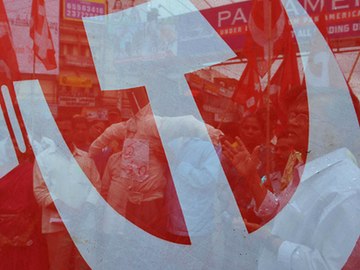In a recent essay in Open the Magazine, I presented a data-based analysis of claims that “Saffron” or “Hindu” terror is a major threat to India, even more of a concern than Islamic or other forms of terrorism.
Such claims are frequently made by politicians such as Congress Vice-President Rahul Gandhi, former home minister P Chidambaram, and commentators such as Ramachandra Guha.
To test these claims, I analysed a unique dataset, the Global Terrorism Database, which is housed at the National Consortium of Terrorism and Responses to Terrorism in the US. For India, it contains close to 10,000 unique incidents of terrorism between 1972-2014.
For details on the dataset and methodology, please see the original essay.
The format of my Open essay precluded sharing infographics and decadal breakdowns of the analysis, which are presented here.
Chart 1 presents summary statistics for the whole period 1972-2014.
Source: Rupa Subramanya’s calculations from Global Terrorism Database
As the chart clearly shows, almost a third of terrorist incidents during this period were accounted for by Maoist/Left Wing terrorist groups, followed by the insurgencies in the North East, which accounted for about a quarter of all incidents. In third place is the insurgency in Jammu and Kashmir, a little more than a fifth of all incidents. Islamic terrorism outside Jammu and Kashmir accounts for a little more than three percent of all incidents. So called Saffron or Hindu terror accounts for only 0.64 percent of the total.
If a picture is worth a thousand words, then Chart 1 is in itself an essay thoroughly debunking claims of the impending danger to India of saffron or Hindu terror.
We can gain more insight into the pattern of terrorism over the years by looking at a breakdown of incidents by group divided into the roughly decadal periods covered by the dataset. This is presented in Chart 2.

This clearly reveals that the 1980s were dominated by Sikh terrorism, while the 1990s saw terrorist incidents in Jammu and Kashmir topping the list. The 2000s saw the rise of Maoist/Left Wing terrorism, as well as terrorism associated with the insurgencies in the North East. In the most recent period, the half decade since 2010, Maoist/Left Wing terrorism is off the charts as the largest source of terrorism in India, followed by the North East as a distant second. Although note that incidents in the North East have, like the Maoists/Left Wing, have been rising decade on decade. Again, so called saffron or Hindu terrorism is so minuscule, it barely even registers on the chart.
My research remains a work in progress. But what is abundantly clear from the data is that claims about any impending threat about so called saffron or Hindu terror are completely overblown if not mischievous and misleading. By far, the biggest single threat to India remains the Maoist/Left Wing terrorist insurgencies, who are committed in their manifestos to the destruction of the Indian republic. What makes this threat even more insidious is that far left extremists have sympathisers and apologists among the so called moderate left in India, such as a prominent members of the Communist Party of India (Marxist) and well-known social activists such as Arundhati Roy and the newly anointed hero of the left,Kanhaiya Kumar.
The second biggest threat to India is the collection of insurgencies in the North East of the country. Unlike the Maoist/Left Wing groups, who while in theory are motivated by far left wing ideology, there are a mixture of motivations and factors driving the conflict in the North East. These include regional independence and autonomy movements, conflict among different tribal groups and certainly some element of religious motivation whether Christian, Islamic, animist or other.
The third most important source of terrorism in India relates to the conflict in Jammu and Kashmir. In this analysis I’ve followed conventional scholarship and classified it as a regional and not a religious conflict. But it must be noted that there’s a strongly Islamic element to the anti-India insurgencies in the state as evidenced by the ethnic cleansing of Hindu Kashmiri Pandits from the valley. Out of many incidents, one of the most gruesome was the 2003 massacre by Islamic terrorists of 24 Kashmiri Pandits in Nadimarg, which included the shooting to death at point blank range of the victims which included two toddlers. Their “crime” was not leaving their ancestral village, unlike other Kashmiri Pandits who had fled the valley.
The bottomline is this: Hindus comprise some 80 percent of the population of India but incidents of so called saffron or Hindu terror are a mere 0.6% of the total. You decide if saffron or Hindu terror is a legitimate concern or a red herring created by politicians and commentators with ulterior motives.






